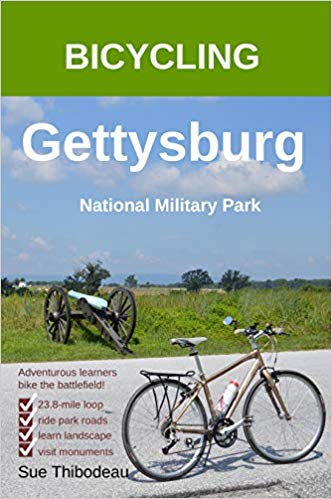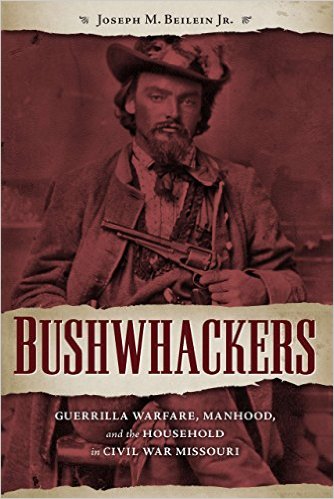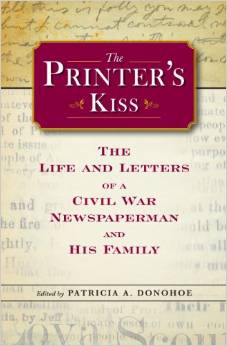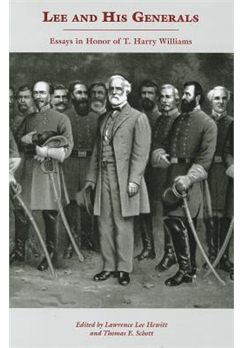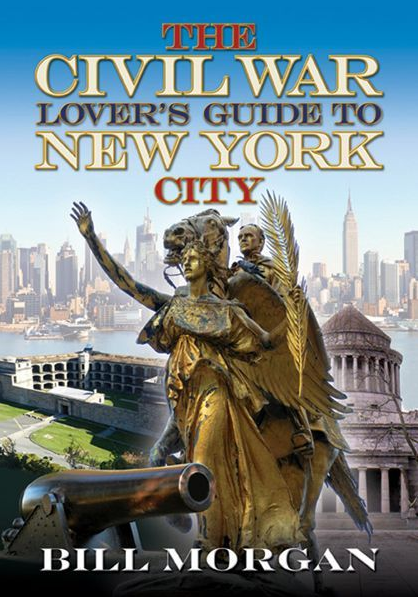The battle fought on July 1, 2, and 3, 1863, in Adams County, Pennsylvania, “has brought the name of Gettysburg from rural obscurity, to world-wide celebrity,” wrote historian and landscape artist John Bachelder in the field’s first guidebook, published one decade later. Already, tens of thousands of travelers from across America and around the globe journeyed to view “the vast region over which destruction and death held carnival for three long days, with an intensity of interest which the simple charms of nature never would have aroused,” he noted. “And thus it will continue to be for centuries to come.”
Nearly 160 years later Bachelder’s observation has endured, his prediction prescient. Innumerable tourists have explored the famous battleground with thousands of books to direct them along the way. The production of maps, travel guides, and tour literature has continued unabated—and a unique new entry now joins that list.
In Bicycling Gettysburg National Military Park: The Cyclist’s Civil War Travel Guide, author Sue Thibodeau has produced a work that encourages sightseers to temporarily ditch modern means of viewing the field in favor of traversing the south-central Pennsylvania countryside on a bike. She invites readers to examine “the battlefield landscape for natural and physical landmarks—not only to stay oriented, but also to connect geography with the historical narrative.” This approach refreshingly harkens back to the days of Bachelder and nineteenth century sightseers who largely studied the setting by more intimate and personal means, on foot, on horseback, and by carriage.
Bicycling Gettysburg is comprehensible to readers and riders of all ages and expertise (in both the cycling and historical senses) through pacing and descriptions that are concise and readable for both aficionados and novices alike.
Following a preface that briefly outlines “Experiential Learning on a Bicycle,” cycling with an intentional “Historical Approach,” and analyzing “Technical Methodology,” Thibodeau spends several dozen pages outlining proper gear, transportation, lodging, contingency planning, health and safety tips, cycling signals, and verbiage. Through several useful sections, she points out the location of parking lots, picnic groves, accessible roads and sidewalks, restrooms, and water fountains, allowing for ease of planning along the path of one’s choice.
The book proposes 12 separate bicycling routes, including one designed for those “who can dedicate one full day” to cover the entirety of the battlefield’s principal sites, loops that focus on each specific day of the battle, and paths that primarily span particular portions of the field such as Seminary Ridge, Cemetery Ridge, Culp’s Hill, Devil’s Den, the Wheatfield, Little Round Top, and East Cavalry Field (a course that is specifically geared “to expert road bicyclists and to historians who have previously toured the main battlefield”).
Thibodeau provides other information and statistics, like the mileage of each route and elevation data, such as the minimum and maximum altitudes reached along the way. Detailed maps depict arrows so that cyclists can visualize their paths, and carefully alert riders to the locations of busy roads and wide road shoulders. (Additional companion maps are available for download in PDF format online.)
Each portion of a course features a Segment Cue Sheet, which is at first an overwhelming chart of acronyms, page numbers, names, and locations, but becomes a valuable tool for understanding the sites along each route, including Civil War-era buildings, monuments, markers, memorials, and modern museums. To interpret those tangible items that cyclists will see along the way, multiple chapters exhibit well-labeled photographs, descriptions, brief histories, maps, and GPS coordinates of state monuments, equestrian monuments, statues and memorials to individuals, officers’ headquarters markers, regimental monuments, and other battlefield structures.
At the culmination of Bicycling Gettysburg, Thibodeau offers a brief history of the National Military Park and its tour roads; she also supplies a glossary of terms that serves as an essential reference for those who are generally unfamiliar with military terminology and jargon. The author has also continued a relatively recent trend of providing a list of sources and recommended further reading materials at the conclusion of her tour narrative.
In his inaugural guidebook in 1873, John Bachelder rejoiced in knowing that “the great multitude[s] hasten to Gettysburg for health or pleasure” as the battlefield’s “fame had captivated them.” A century-and-a-half later, as Americans look for innovative ways to engage in active and healthy lifestyles, Sue Thibodeau’s book offers an invigorating and fresh means by which to continue to captivate audiences at a benchmark site of the nation’s past.
Codie Eash currently serves as Visitor Services Coordinator at Seminary Ridge Museum, Gettysburg. He operates the independent Facebook blog “Codie Eash – Writer and Historian” and is a regular contributor to PennCivilWar.com.
